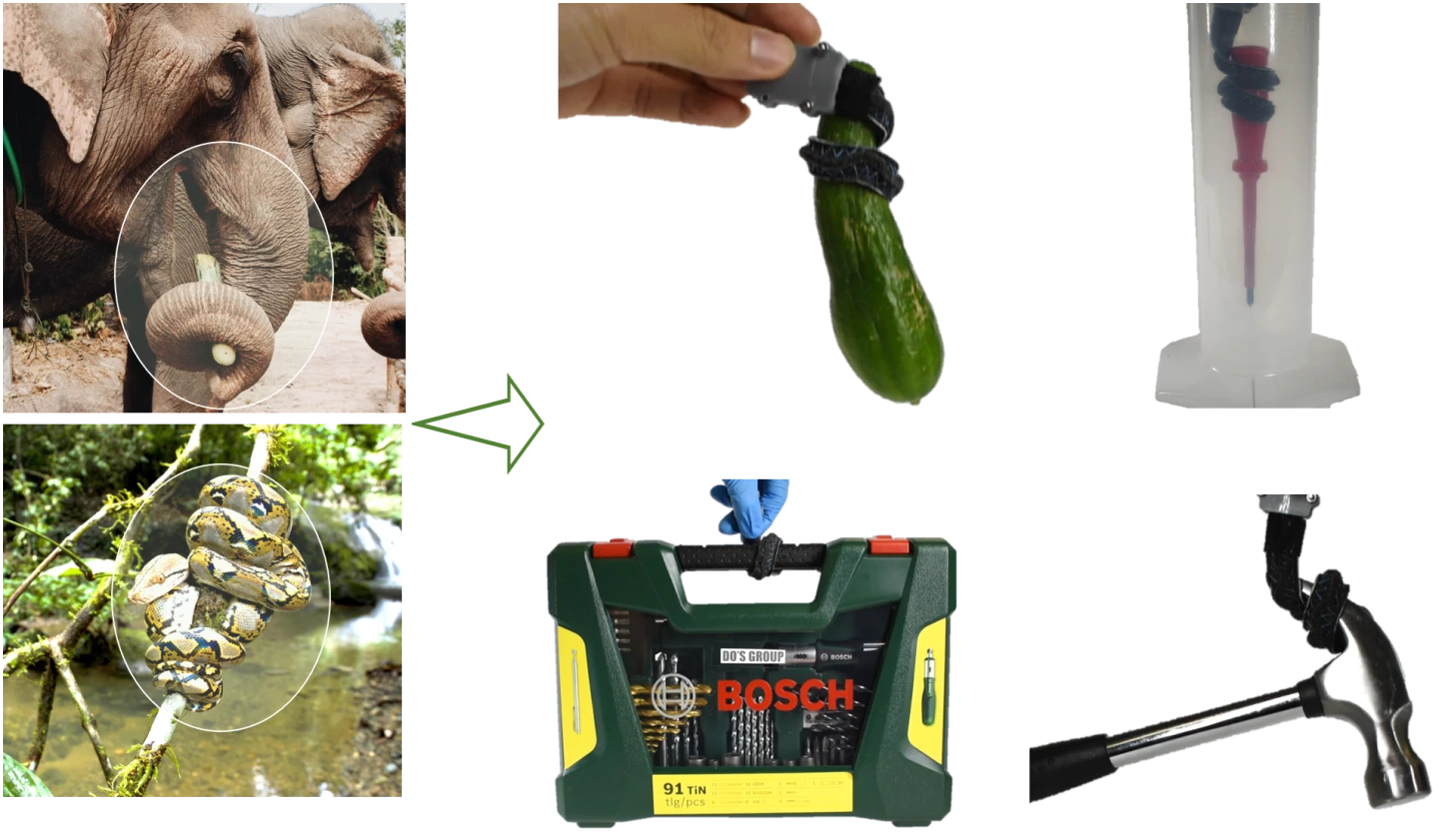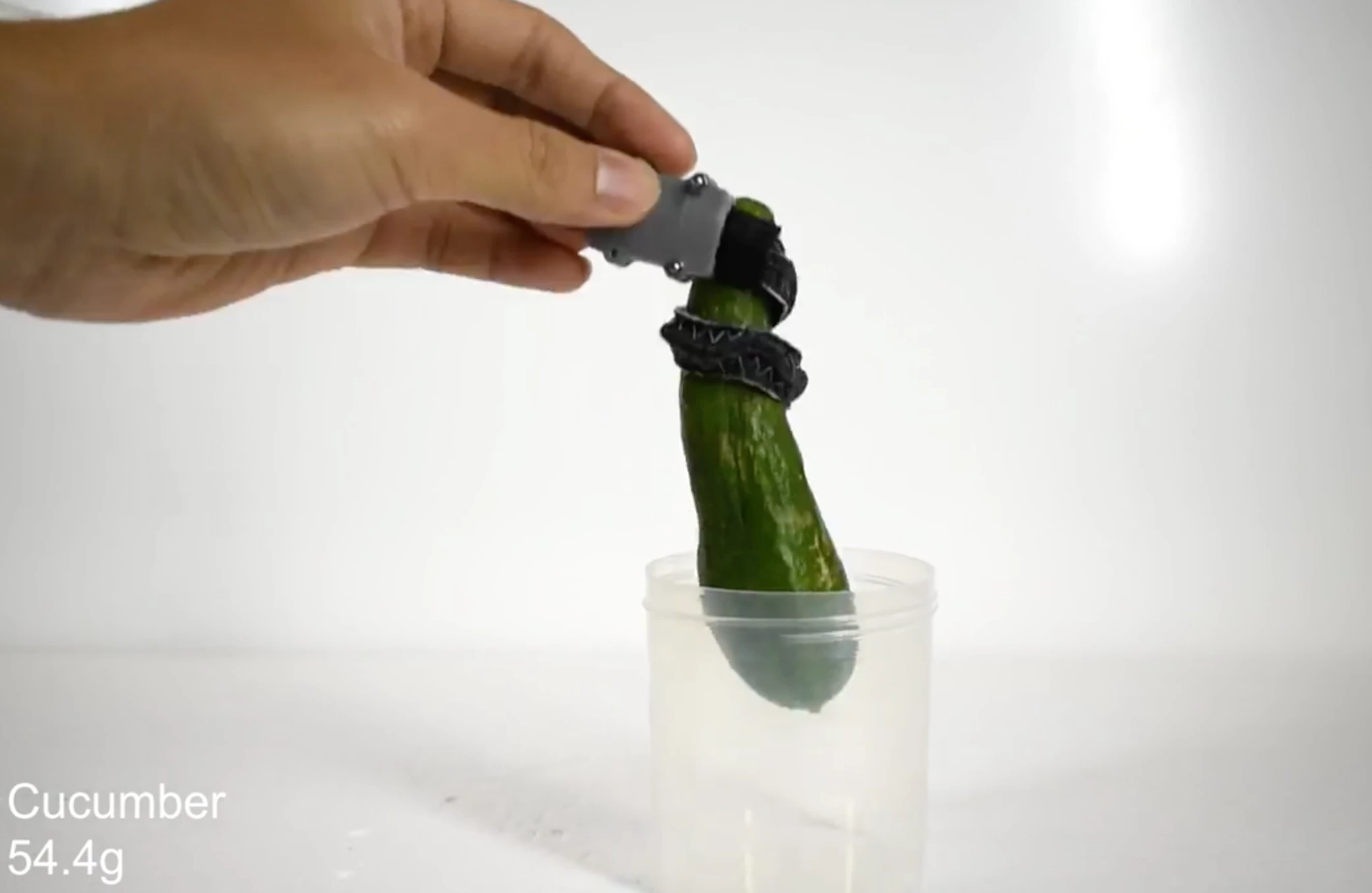Chameleon tongues, gecko feet and octopus tentacles are just a few of the animal body parts we’ve seen inspire soft robotic grippers, but nature still has plenty to offer researchers in this field. A team in Australia is the latest to tap into the world of biomimicry, demonstrating a new type of robotic gripper modeled on an elephant’s trunk, with the ability to pick up and release objects even when they’re tucked away in confined spaces.
The invention is the handiwork of a robotics team working under Dr Thanh Nho Do at Australia’s University of New South Wales (UNSW), who just a couple of months ago showed off a haptic feedback device that can give gloves a finer sense of touch. This time around the team set out to recreate the gripping abilities of elephants and other animals that are similarly able to embrace objects using their coiling body parts.
“Animals such as an elephant, python or octopus use the soft, continuum structures of their bodies to coil their grip around objects while increasing contact and stability – it’s easy for them to explore, grasp and manipulate objects,” Do says. “These animals can do this because of a combination of highly sensitive organs, sense of touch and the strength of thousands of muscles without rigid bone – for example, an elephant’s trunk has up to 40,000 muscles.
The gripper is made from soft fabric and uses miniaturized hydraulics to grab objects of different sizes and weights. It can be used to pick up clunkier objects with holes in them, such as a mug with a handle, but is also slender enough to retrieve items from confined spaces, such as a pen from inside a hollow tube.

“This device also has an enhanced real-time force sensor which is 15 times more sensitive than conventional designs and detects the grip strength required to prevent damage to objects it’s handling,” Do says. “There is also a thermally-activated mechanism that can change the gripper body from flexible to stiff and vice versa, enabling it to grasp and hold objects of various shapes and weights – up to 220 times heavier than the gripper’s mass.”
In testing, a prototype gripper with a weight of 8.2 g (0.3 oz) was capable of lifting a 1.8-kg (4-lb) object, more than 220 times its own mass. The team is now working to integrate the gripper into the ends of robotic arms and combine it with its previously-developed haptic feedback device, with hopes of making the technology commercially available in 12 to 16 months.
The research was published in the journal Advanced Materials, while the video below shows it in action.
Source: University of New South Wales






